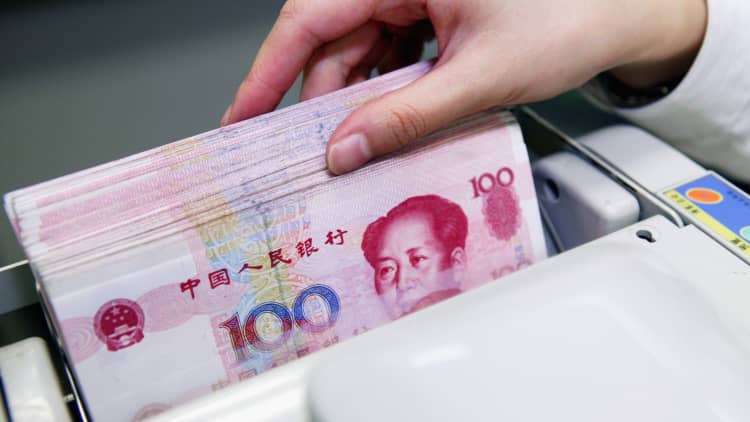
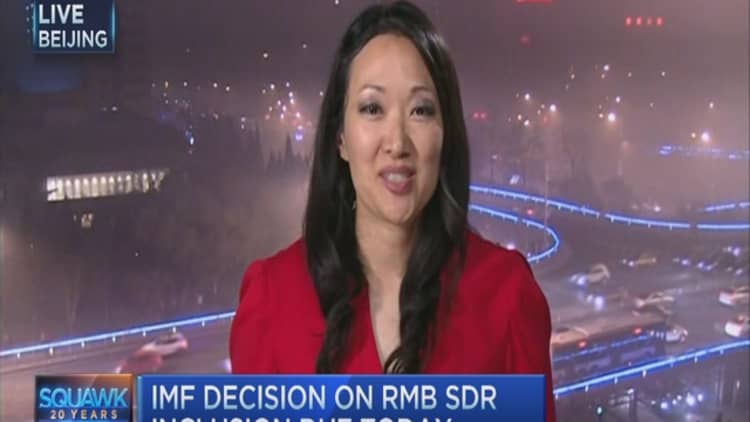
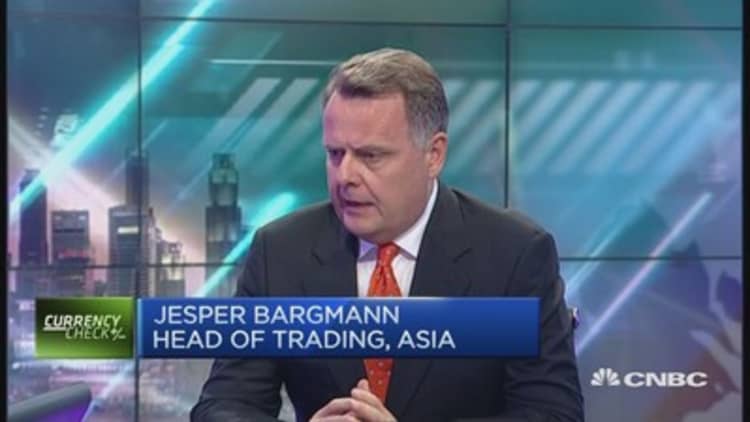
The International Monetary Fund's (IMF) Executive Board has included China's yuan, or renminbi as it's also known, in an exclusive group of currencies that make up the basket of the IMF's Special Drawing Rights (SDR).
Inclusion represents public acknowledgement of China's heft in the global economy. The U.S., a major investor in the fund, backed the move, as has the IMF's Managing Director Christine Lagarde.
Here's what you need to know about why this change matters to global markets.
So, what exactly is the SDR?
The SDR is a type of international reserve asset that the IMF created in 1969 to buttress the Bretton Woods system of fixed exchange rates that was established at the end of World War II.
Back then, countries could use gold holdings and widely accepted currencies to buy their local currencies overseas in order to maintain their exchange rates. But the supply of gold and the dollar could not keep pace with the growth in world trade or new developments in financial markets. So the IMF created an asset that could be exchanged for freely usable currencies.
Read MoreCapital controls: CNBC Explains
Countries are allocated SDRs in proportion to the IMF quotas they pay. They can use SDRs to make payments for future quota increases, to settle debts they owe to the IMF, which uses SDRs as a system of account, or to rebalance their reserves.
The importance of SDRs waned somewhat after the Bretton Woods system collapsed in 1973 and countries let their currencies move more freely in line with market forces. Still, SDRs came in handy during the global financial crisis when they helped supplement member countries' official reserves. As of September 2015, SDRs worth $204.1 billion had been created and allocated to IMF's members. This number is equivalent to about $280 billion.
Currently, the value of an SDR is based on a basket of four currencies: the euro, Japanese yen, pound sterling, and the dollar. At Monday's meeting, a decision will be made on whether the yuan should be added to this group.
Read MoreCurrency Carry Trade: CNBC Explains
It's important to note that the SDR is not a currency nor a claim on the IMF. Instead, holders of SDRs can exchange them for currencies that make up the basket, through deals with other SDR holders.
Why is the yuan's inclusion a big deal?
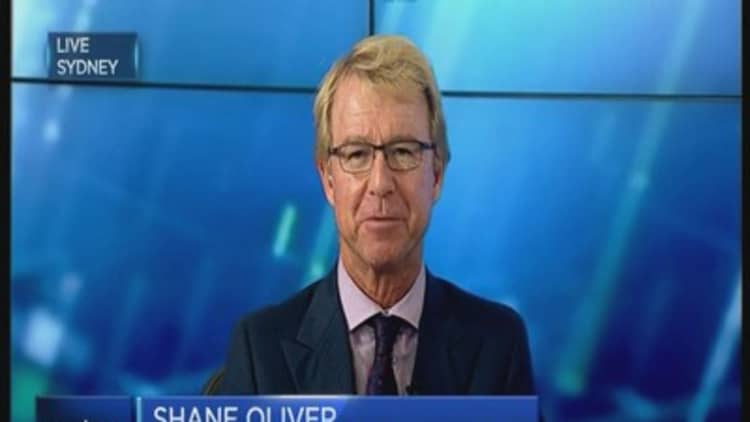
For one, the inclusion is the biggest change to the basket since 1999, when the euro was created, said Raymond Yeung, a senior economist at ANZ.
The yuan is now officially recognized as a reserve currency, in a reflection of the changing dynamic of the world's economy.
Central banks use their reserves of foreign currencies to buy their own currency or pay international debts. The inclusion of the yuan would mean central banks who tend to hold their foreign exchange reserves in dollars or euros could have an alternative. For many emerging markets, trade linkages with China are already strong and now their reserves could reflect this relationship.
Finally, after nearly four decades of reforms, the Chinese currency is considered to meet the criteria of being "freely usable," passing the IMF's test on convertibility, Yeung said. China's taking steps towards a more open, market-oriented economy and policymakers have cited the inclusion in the SDR basket as a crucial aspect of this metamorphosis.
Will there be a surge in demand for the yuan?
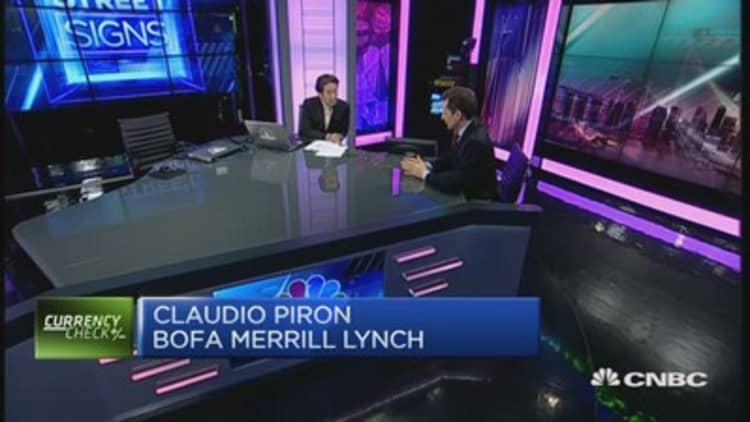
Not immediately, at least. Even after the IMF's Executive Board gave the go-ahead on November 30, the yuan won't be added to the SDR basket until September 2016. So that leaves IMF members with enough time to respond to the change in the basket's composition.
Claudio Piron and Adarsh Sinha at Bank of America Merrill Lynch estimate demand for the yuan created by IMF members rearranging their SDRs to be worth $35 billion, not a particularly large number for an economy of China's size.
But the long-term implications could be more profound.
Estimates by Piron and Sinha suggest central banks already hold around $80 billion in yuan reserves. Assuming the currency eventually reaches a similar share of international reserves as the pound and the yen, the additional demand could be about $370 billion according to their calculations.
A note of caution, however. This magnitude of change in global reserves takes at least three years, and usually longer, the BoAML analysts say. This gradual pace of inflows related to the yuan's rise as a reserve currency will be more than matched by the liberalization of outflows.
Still, as the yuan gains in importance as a reserve currency, China's bond market could become more international. According to Piron and Sinha, China's bond market is the world's third largest but foreign ownership is a measly 3 percent. As more countries start parking their reserves in yuan, the number should climb as risk-averse central banks typically favor holding government bonds.
This number could climb to 20 percent of outstanding bonds, looking at the average historical record of neighboring Asian bond markets, they say.
Hold on, what about reforms?
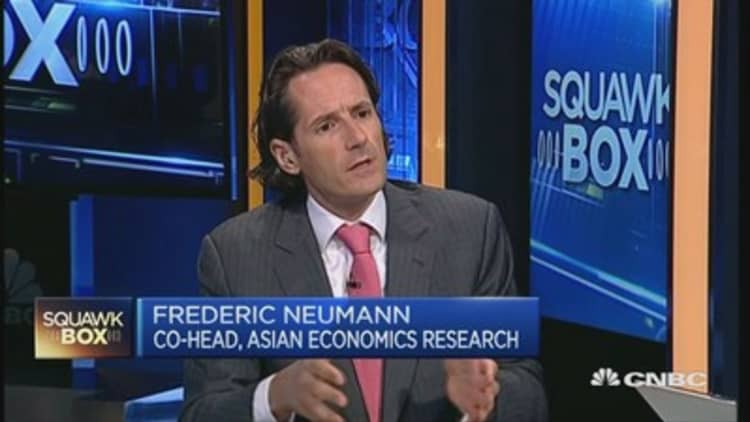
Chinese authorities tend to intervene in their financial markets just a wee bit more than peers whose currencies tend to enjoy reserve status. There are also controls on how much money Chinese investors can send out of the country and how much domestic assets overseas investors can buy.
Analysts and economists expect some steps to address these issues but the steps are understandably (and wisely) expected to be gradual. Yeung at ANZ believes China will have to meet certain requirements before September next year. The yuan is currently traded within a 3 percent daily allowable band with the euro, yen and other major currencies.
In other words, the yuan can rise or fall 3 percent from a daily reference rate set by the People's Bank of China (PBOC). The PBoC may still need to widen the trading band of the yuan with the dollar from 2 percent either side to 3 percent allowing a more flexible exchange rate regime, Yeung said.
Piron and Sinha believe that a SDR inclusion implies a commitment by China to continue down the path of gradual capital account liberalization and reduced intervention in currency markets.
"Moreover, the steady move higher in the USD/CNY fixing suggests the PBoC would allow the fixing to be more sensitive to broader US dollar trends than previously, making it reflect market conditions better," they say.

